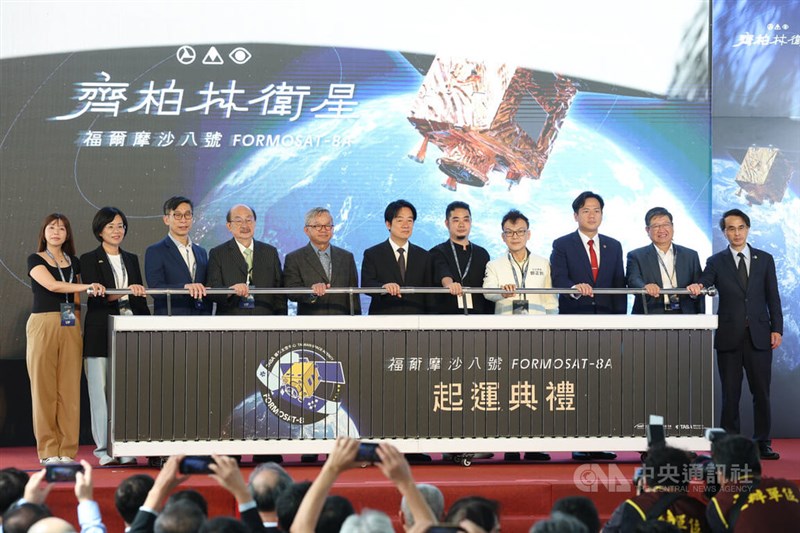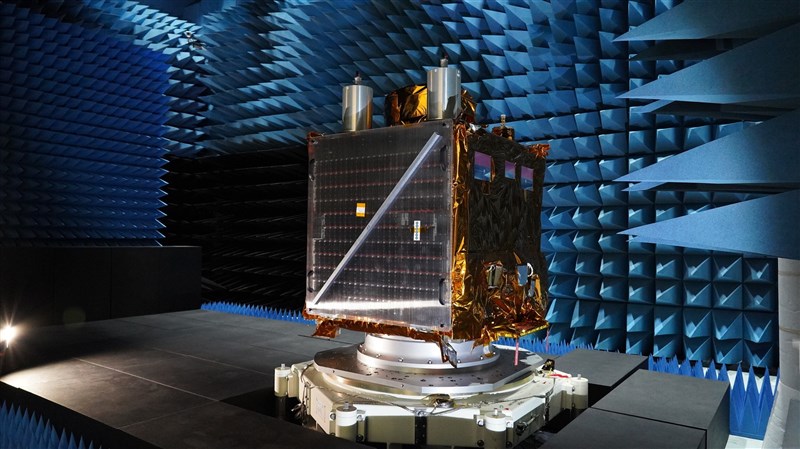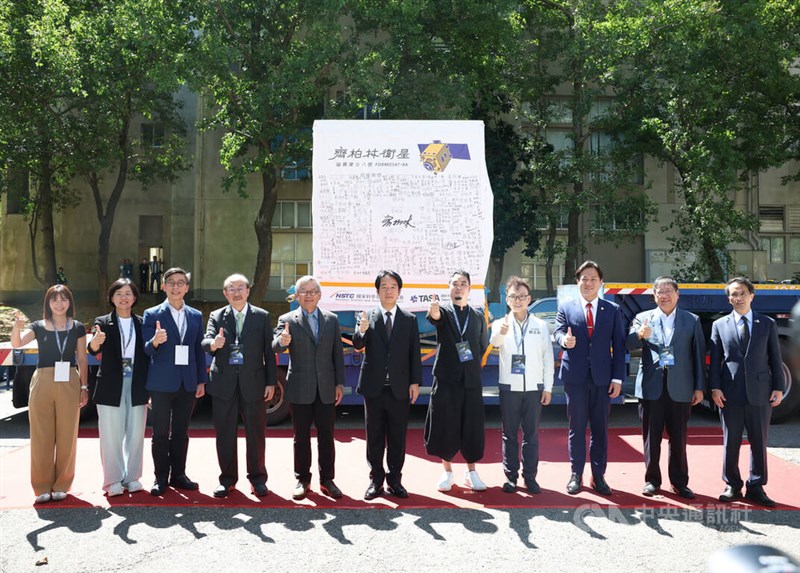
Taipei, Oct. 7 (CNA) The first satellite of FORMOSAT-8, Taiwan's first domestically developed optical remote sensing satellite constellation, left the Taiwan Space Agency (TASA) headquarters in Hsinchu on Tuesday for a November launch in the United States.
"Over the next two days we will send it to California in the U.S., and we hope to successfully launch it next month," said Wu Cheng-wen (吳誠文), head of the National Science and Technology Council (NSTC), during a ceremony held at TASA headquarters to mark the start of shipment.
The first satellite of FORMOSAT-8, code-named FS-8A, will be carried by a SpaceX Falcon 9 rocket into space from Vandenberg Space Force Base, according to an August news release from TASA.
Wu, who also serves as chair of TASA, said that FS-8A was assembled in Taiwan, with 84 percent of its key components designed, developed and manufactured domestically.

According to a video released by TASA, FS-8A is one of the eight optical remote sensing satellites in the FORMOSAT-8 constellation, and its payload "functions as a large space-based camera," with a system capable of identifying objects about 0.7 meters across on Earth after image post-processing.
Expected to be fully deployed in 2031, the constellation -- with all eight satellites operating in a sun-synchronous orbit at an altitude of about 561 kilometers -- will pass over Taiwan three times a day to deliver Earth-observation data that can "support disaster management, national security, and global collaboration," the video showed.
Describing FORMOSAT-8's role in national security as "of paramount importance," TASA Director General Wu Jong-shinn (吳宗信) said with detailed analysis, satellite imagery can be turned into "a range of intelligence to safeguard the nation."
Building on the experience of FORMOSAT-5, a remote sensing satellite launched in 2017 and still operating in orbit, he said FORMOSAT-8 is expected to carry that work forward in the Sentinel Asia program, strengthening imagery sharing with friendly countries in the Asia-Pacific region.
In terms of disaster management, the TASA video illustrated how imagery from the satellites can detect vegetation changes and estimate areas affected by disasters such as landslides.
Also attending the ceremony, President Lai Ching-te (賴清德) called the advent of FORMOSAT-8 "an important milestone in Taiwan's space technology," as it is the country's first domestically developed satellite constellation.
"After liftoff, FORMOSAT-8 will succeed FORMOSAT-5 with higher resolution, continuing and upgrading the mission of watching over Taiwan and observing the world," Lai said.
Naming FS-8A the "Chi Po-lin Satellite" (齊柏林衛星), Lai said he hopes the spirit of Chi -- a late documentary director renowned for chronicling Taiwan through aerial imagery -- will extend into space with the satellite and "continue to watch over Taiwan."
Praising FS-8A for having over 80 percent domestically developed key components, Lai said the Taiwanese content of the country's satellites will continue to rise "as long as we keep pushing," without elaborating on how the increase would be achieved.

- Politics
Foreign Minister Lin Chia-lung spotted near AIT headquarters
12/13/2025 01:05 PM - Society
Temperatures to fall steadily Saturday as cold air mass arrives
12/13/2025 12:03 PM - Society
Taiwan headline news
12/13/2025 11:12 AM - Politics
DPP supports Cabinet plan to stop allocation of more funds to local areas
12/12/2025 10:13 PM - Politics
Taiwan's deputy representative to India dies during event
12/12/2025 09:37 PM